
Mountain rescue refers to search and rescue activities that occur in a mountainous environment, although the term is sometimes also used to apply to search and rescue in other wilderness environments. This tends to include mountains with technical rope access issues, snow, avalanches, ice, crevasses, glaciers, alpine environments and high altitudes. The difficult and remote nature of the terrain in which mountain rescue often occurs has resulted in the development of a number of specific pieces of equipment and techniques. Helicopters are often used to quickly extract casualties, and search dogs may be deployed to find a casualty.

Royal Air Force Kinloss, or more simply RAF Kinloss, is a former Royal Air Force station located near the village of Kinloss, on the Moray Firth in the north east of Scotland, UK.
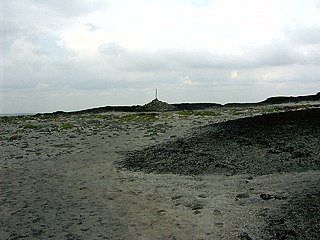
Bleaklow is a high, largely peat-covered, gritstone moorland in the Derbyshire High Peak near the town of Glossop. It is north of Kinder Scout, across the Snake Pass (A57), and south of the A628 Woodhead Pass. Much of it is nearly 2,000 feet (610 m) above sea level and the shallow bowl of Swains Greave on its eastern side is the source of the River Derwent.

The Boeing B-29 Superfortress is a WWII era long range, strategic heavy bomber that was produced in many experimental and production models.

The Four Inns was a fell race/hiking event held annually over the high moorlands of the Northern Peak District between 1957 and 2019. It took place mainly in Derbyshire, in northern England. It was organised by the Scout Association. It was a competitive event, without an overnight camp. It was first held as a Rover Scout event in 1957, but was later opened to other teams of experienced hill walkers and fell runners.
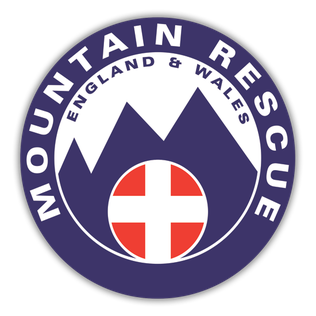
Mountain rescue services in England and Wales operate under the association of Mountain Rescue England and Wales (MREW), formerly called Mountain Rescue Council of England & Wales. The association has a number of regional mountain rescue teams, each of which is an independent charity. The team members are highly trained volunteers who are called out by the police.
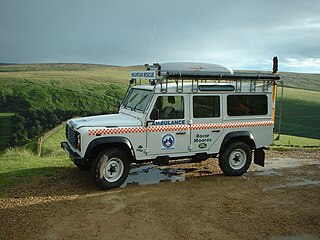
The Holme Valley Mountain Rescue Team is a voluntary organisation that functions as a search and rescue service covering the southern half of West Yorkshire. It is a registered charity entirely funded by public contributions.
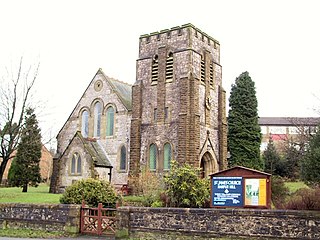
Harpur Hill is a small village on the outskirts of Buxton, Derbyshire, England. It is in the Cote Heath ward of the High Peak Borough Council. It has a primary school, a park, a pub, a working men's club and a Methodist church.
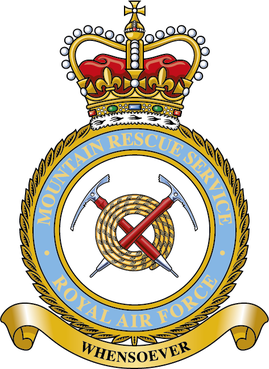
The Royal Air Force Mountain Rescue Service (RAFMRS) provides the United Kingdom military's only all-weather search and rescue asset for the United Kingdom. Royal Air Force (RAF) mountain rescue teams (MRTs) were first organised during World War II to rescue aircrew from the large number of military aircraft crashes then occurring due to navigational errors in conjunction with bad weather and resulting poor visibility when flying in the vicinity of high ground. The practice at the time was to organise ad-hoc rescue parties from station medical sections and other ground personnel.

Stob na Boine Druim-fhinn is a mountain on the Cowal peninsula in Argyll, Scotland, northwest of Lochgoilhead.
Buxton & Leek College is a college of Further and Higher Education operating at their campuses and facilities in Buxton, Derbyshire, Leek, Staffordshire and Derby, Derbyshire. The college is part of the University of Derby.
Mountain Rescue Committee of Scotland (MRCofS), now known as Scottish Mountain Rescue is the body which represents and coordinates mountain rescue teams in Scotland. It has 27 affiliated mountain rescue teams.

Harpur Hill Quarry is a disused limestone quarry on Harpur Hill, Derbyshire, England. Limestone was extracted there from 1835 to 1952 for lime burning at lime kilns to produce quicklime. The quarry was used by the Royal Air Force as a chemical weapons storage depot during the Second World War, the largest such depot in the United Kingdom. Afterwards a number of captured German chemical munitions were disposed of at the site by burning, which was only partially successful. The RAF depot closed in 1960 and the site is now vacant.
RAF Harpur Hill is a former Royal Air Force station, situated at Harpur Hill near Buxton, Derbyshire in England. The site was operational from 1938 to 1960 and was mainly used as an underground munitions storage facility. It became the largest ammunitions dump in the country across the 500 acres (200 ha) site.
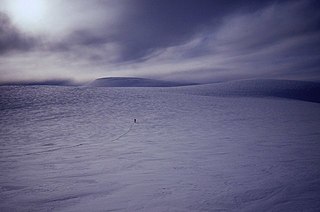
The Cairngorm Plateau disaster, also known as the Feith Buidhe disaster, occurred in November 1971 when six fifteen-year-old Edinburgh school students and their two leaders were on a two-day navigational expedition in a remote area of the Cairngorms in the Scottish Highlands.

The Bleaklow Bomber was a US Air Force (USAF) Boeing RB-29A Superfortress that crashed near Higher Shelf Stones on Bleaklow in the Peak District in 1948. It was modified as a reconnaissance aircraft, rather than a bomber.

The Buxton Mountain Rescue Team is a UK registered charity operating search and rescue missions from its base at Dove Holes near Buxton in Derbyshire. The team covers an area of about 400 square miles across Derbyshire, Staffordshire and Cheshire.

Mountain rescue in Wales is the search and rescue activities that occur in the mountainous and other wilderness environments in Wales. Wales is largely mountainous with its higher peaks in the north and central areas, including Snowdon, its highest summit. Mountain rescue teams are called out through the police, via the 999 system, to assist police, fire and ambulance. They also work closely with the Air Ambulance and HM Coastguard helicopters as well as the search and rescue dog associations and cave rescue.

High Edge is a limestone hill overlooking Harpur Hill, Buxton in Derbyshire, in the Peak District. The summit is 472 metres (1,549 ft) above sea level. The lower hilltop is marked by a cairn.

















